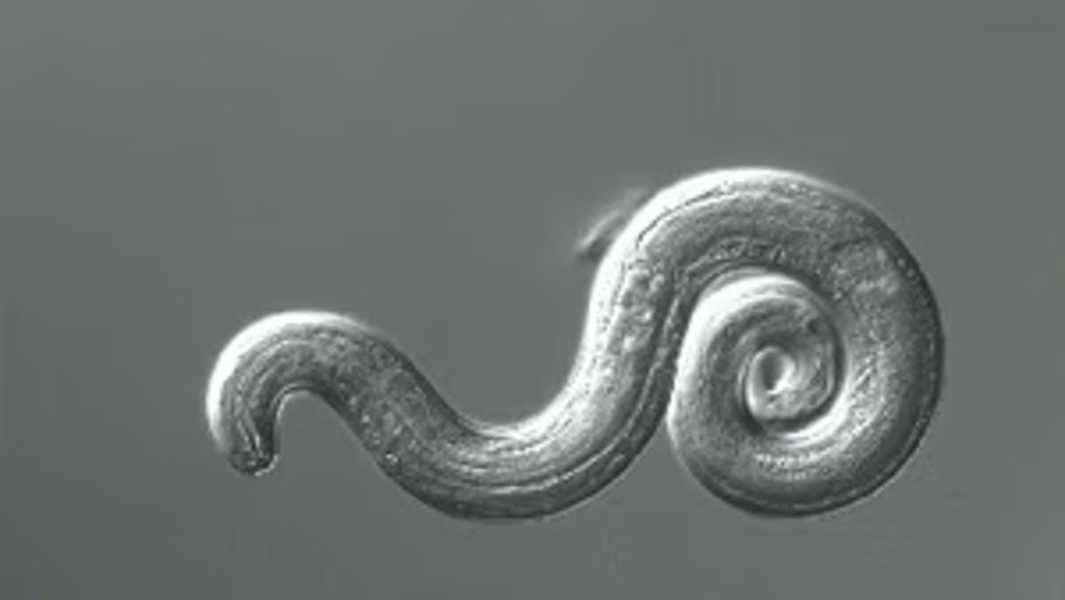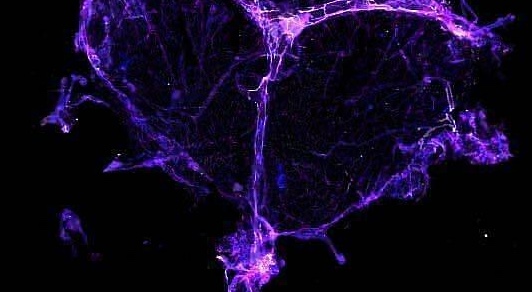
Rat lungworm can cause a rare form of inflammation of the brain and spinal cord often caused by parasites. (Image courtesy of CDC)
Doctors discovered that the woman's painful burning legs were the result of a parasite invading her brain.
According to a case published Feb. 13 in The New England Journal of Medicine, a 30-year-old New England woman likely contracted the parasite during a trip to Hawaii.
The first symptoms were a strange burning sensation in her feet. Over the next few days, the discomfort spread up her legs, and the affected areas became sensitive to even the lightest touch. She also experienced fatigue, which she initially attributed to jet lag after a three-week trip to Thailand, Japan, and Hawaii.
The woman went to the emergency room because of sensations in her legs, but her tests came back normal and she was eventually discharged. A few days later, the discomfort spread to her arms and truck, and she developed a headache. So she returned to a second emergency room, where her tests were again “reportedly normal,” although her immune cell levels had increased. She was given medication to help with her headache before being discharged again.
About a week after the symptoms began, the woman became confused and her partner took her back to the hospital. Blood tests and kidney function remained normal, and microscopic examination of the blood revealed no obvious signs of parasites. However, levels of white blood cells known as eosinophils were significantly elevated; these cells help the body fight off foreign invaders, including parasites.
The medical team then performed a lumbar puncture to take a sample of the cerebrospinal fluid that surrounds the brain and spinal cord. This test also showed very high levels of eosinophils.
The results were consistent with a condition known as eosinophilic meningitis, a rare form of inflammation of the brain and spinal cord often caused by parasites.
According to a case report, the most common cause of eosinophilic meningitis is the rat lungworm (Angiostrongylus cantonensis), a parasite found in many tropical and subtropical areas of Southeast Asia and the Pacific Islands, including Hawaii.
After ruling out other causes, the team determined that A. cantonensis was the cause of the woman's condition. Although the parasite was not found in the patient's blood, additional tests of her spinal fluid revealed genetic traces of the parasite.
The adult form of the parasite primarily lives inside rodents. The larvae are excreted through the rodent's feces, where they are eaten by slugs and snails. These larvae mature inside the mollusks before being eaten by a rat or other rodent, and the life cycle begins again.
If a person eats an infected shellfish that has been raw or undercooked, or a raw vegetable dish contaminated with their slime, they can also become infected. Shellfish, including land crabs and freshwater shrimp, can also become infected if they eat an infected slug or snail.
Not all people who ingest A. cantonensis develop symptoms, according to the U.S. Centers for Disease Control and Prevention (CDC). However, in some cases, the larvae migrate to the host’s central nervous system and reach the brain — in some lab animals, this can happen within four hours of ingestion, according to a case report.
Once in the human brain, the parasite can cause headaches, neck stiffness, vomiting, confusion, tingling or burning, and eventually seizures and vision problems.
In many cases, A. cantonensis infections resolve on their own as the parasites die, even in cases of meningitis, the CDC reports. In these cases, supportive care may include pain relievers and anti-inflammatory drugs. However, such infections can sometimes be fatal.
In the woman's case, she was prescribed a 14-day course of antiparasitic drugs along with a steroid to reduce inflammation in the nervous system.
Sourse: www.livescience.com





